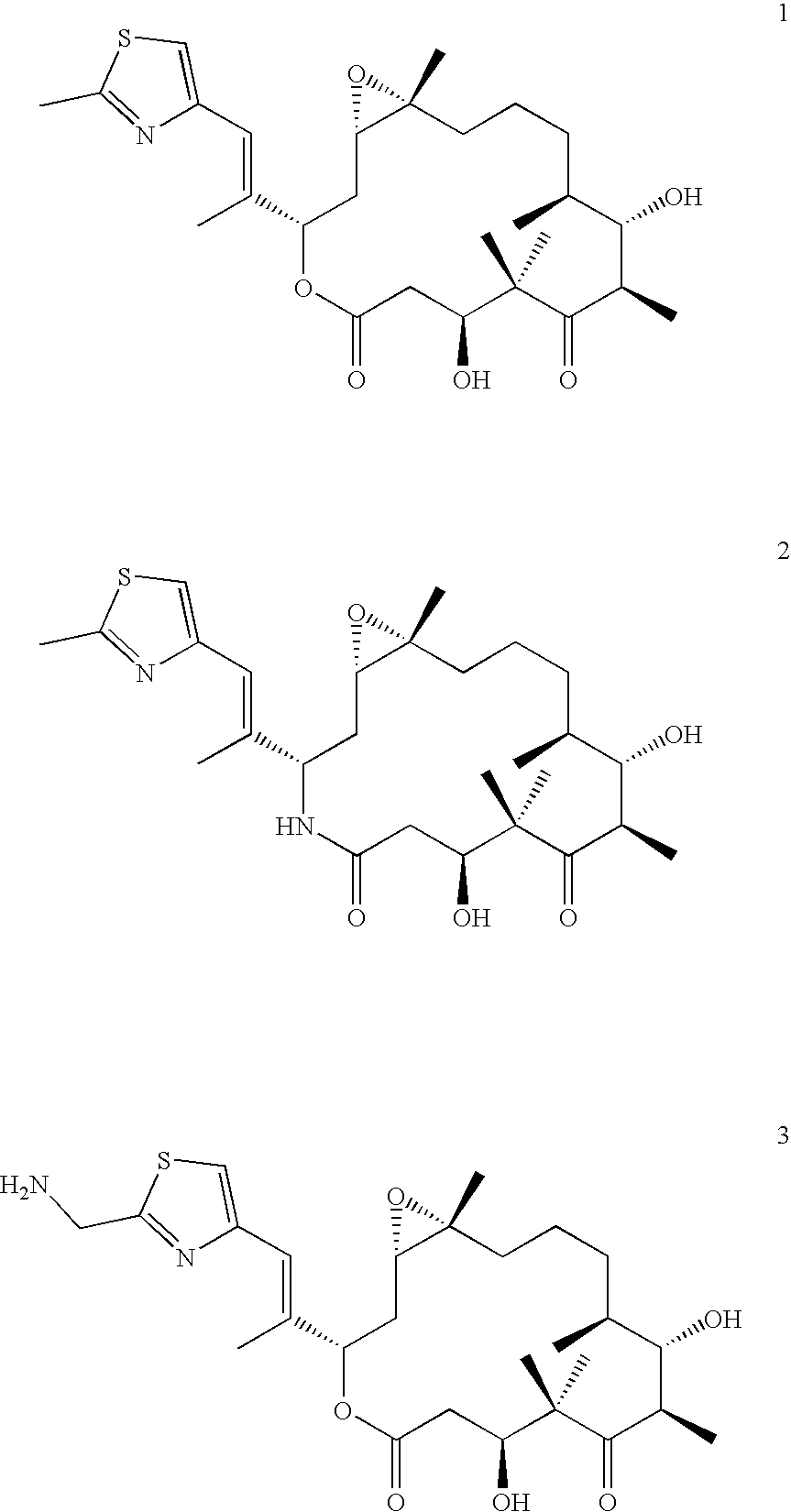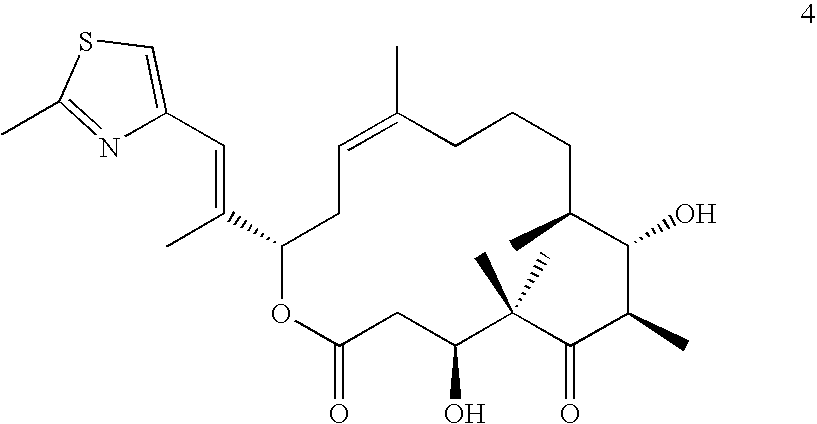Therapeutic formulations
a technology of therapeutic formulations and formulations, applied in the field of formulations, can solve the problems of poor aqueous solubility of epothilone d, toxicity of cremophor®, and patient discomfort and toxic effects
- Summary
- Abstract
- Description
- Claims
- Application Information
AI Technical Summary
Benefits of technology
Problems solved by technology
Method used
Image
Examples
example 1
Formation of Epothilone D-Hydroxypropyl-β-Cyclodextrin Lyophylate
[0046] A combination of ten milligrams (“mg”) of epothilone D and 0.4 grams (“g”) of hydroxypropyl-β-cyclodextrin (“HPβCD”) were dissolved in 60% tert-butanol-water to make 1 milliliter (“mL”) of solution. A second solution having ten mg of epothilone D and ten mg of mannitol dissolved in 60% tert-butanol-water was prepared. A third solution of ten mg of epothilone D and ten mg of mannitol in 60% tert-butanol-water was also prepared. Formulation solutions containing ten mg / mL epothilone D were poured into 8 mL glass vials for lyophilization.
[0047] Each of the three solutions was freeze-dried using a commercially available lyophilization apparatus to form an excellent lyophilate cake. The cake containing hydroxypropyl-β-cyclodextrin appeared harder and less smooth than the other two cakes.
example 2
Reconstitution of the Epothilone D-Hydroxypropyl-β-Cyclodextrin Lyophylate and Solubility in Normal Saline
[0048] The solubilities of the lyophilates made as described in Section 0 were determined for a variety of reconstitution solvents at ambient temperature (i e., at a temperature between about 20° C. and about 25° C.). Approximately one mg of epothilone D was placed in a glass test tube. Serial additions of reconstitution solvent to make 100 microliters (“μL”)-, 900 μL-, and 9.0 mL-volume solutions were made to the test tube. After each addition of reconstitution composition, the solution was shaken vigorously for thirty seconds. Upon dissolution of the lyophilate, the solubility upon dilution with normal saline was determined.
[0049] Only lyophilates made using hydroxypropyl-β-cyclodextrin showed desirable solubilities (i. e., a solubility greater than about one mg / mL). The results for various reconstitution solvents are shown in Table 1. (“WfI” is water, “PG” is propylene glyc...
example 3
Oral Activity of Epothilone D
[0051] Three test groups, each of five rats, received either an i.v. dose of epothilone D (10 mg / kg), an oral dose of epothilone D at 20 mg / kg, or an oral dose of epothilone D at 40 mg / kg. Blood samples were collected from the rats over a 24-hour period following dosing. The absolute bioavailability at the 20 mg / kg and 40 mg / kg oral doses ranged from 7-10% and 10-20%, respectively. The half-life was 8 hours for the i.v. group snf 5.6-6 hours for the oral groups. As expected, Cmax was significantly higher and clearance was faster with i.v. dosing.
[0052] In a similar study, three beagle dogs received a single 2 mg / kg i.v. dose of epothilone D followed at one week intervals by a 2 mg / kg and 4 mg / kg oral dose of epothilone D administered by gavage in the same vehicle as i.v. dosing (30% propylene glycol, 20% Chremophor®, and 50% ethanol) diluted 1:10. Blood samples were collected pre-dose, at the end of infusion, or immediately post-dose following oral adm...
PUM
| Property | Measurement | Unit |
|---|---|---|
| v/v | aaaaa | aaaaa |
| concentration | aaaaa | aaaaa |
| concentration | aaaaa | aaaaa |
Abstract
Description
Claims
Application Information
 Login to View More
Login to View More - R&D
- Intellectual Property
- Life Sciences
- Materials
- Tech Scout
- Unparalleled Data Quality
- Higher Quality Content
- 60% Fewer Hallucinations
Browse by: Latest US Patents, China's latest patents, Technical Efficacy Thesaurus, Application Domain, Technology Topic, Popular Technical Reports.
© 2025 PatSnap. All rights reserved.Legal|Privacy policy|Modern Slavery Act Transparency Statement|Sitemap|About US| Contact US: help@patsnap.com


